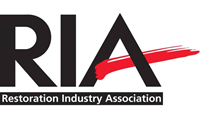
Water Damage and Flooding in Maryland
Maryland is a state with mountains to the west and coastal plains that lead to the Atlantic Ocean. The most common type of natural disaster in Maryland is flooding that is typically caused by heavy rain and tropical storms, river overflows, high tides, or snowmelt. The flooding is expected to get worse in the coming years as climate change is causing an increase in precipitation and rising sea levels. In fact, the sea level around Maryland rose 87.6 millimeters between 1993 and 2019.
Maryland has two major rivers, the Potomac and Susquehanna, that are prone to flooding and coastal flooding from the Atlantic and Chesapeake Bay may occur due to tropical storms and hurricanes. River flooding and hurricanes have been responsible for the biggest flood events in Maryland’s history:
- Great Potomac and Susquehanna Flood of 1936: In the winter of 1935-1936, Maryland experienced heavy snowfall. In early March of 1936, the temperatures rose, and rainfall caused the level of the rivers to rise. Several inches of rain fell throughout the state on March 17 and 18 which caused the Potomac River to rise 10 feet above flood stage. The Susquehanna River also flooded due to a drastic rise in water level. Both rivers caused severe enough flooding to destroy property and bridges, resulting in millions of dollars of damage.
- Hurricane Agnes: Hurricane Agnes first made landfall in the Florida Panhandle in June 1972 and regained strength as it made its way north. The storm brought 12 to 15 inches of rain to the areas of Maryland that were affected, causing streams and rivers throughout the state to flood. Flooding from Hurricane Agnes caused $110 million in damage throughout Maryland.
- Twin Floods: The Twin Floods consist of two flooding incidents that happened seven months apart in January and September of 1996. The reasons these events are referred to as the Twin Floods is because significant flooding happened twice within the same year in the same area. In January, warm air and rain caused the snowpack to melt, resulting in severe flooding that almost reached the stage of a 100-year flood. In September, rain from Hurricane Fran caused the Shenandoah River and streams in the area to flood. The flooding in September also almost reached the level of a 100-year flood.
- Hurricane Floyd: Hurricane Floyd hit North Carolina as a Category 4 storm in September 1999 and hit Maryland as a Category 1 storm. This storm poured over 12 inches of rain and brought storm surges between 2 and 7 feet. Hurricane Floyd caused more than $14 million in damages in Maryland.
- Hurricane Isabel: Hurricane Isabel hit North Carolina on September 18, 2003 and moved into Maryland the next day. The storm caused an 8-foot storm surge on the Chesapeake Bay with 6-foot waves that hit the coastlines of St. Mary’s County, damaging 2500 wharves and piers, the bridge to Saint George Island, and many homes and buildings along the coast. In total, Hurricane Isabel caused more than $820 million in damage.

Flood Insurance in Maryland
Damage caused by flooding is not typically covered by standard insurance policies. Homeowners and property owners must purchase separate flood insurance from the National Flood Insurance Program. With the high risk of flooding throughout the state of Maryland, residents are urged to get flood insurance to protect their property.
The following are important statistics regarding flood insurance in Maryland:
- There are over 61,000 active flood insurance policies.
- These policies provide $15.5 billion in coverage.
- More than 20,000 claims have been made in Maryland.
- $326 million has been paid out in flood insurance claims.
Flooding and water damage can be devastating to a home or business, especially if the damage is not addressed immediately. If your home or business in Maryland is affected by water damage, you need to call a reputable, local water damage restoration contractor right away to remove the water and moisture and restore the damage to your property.
Fire Damage Statistics in Maryland

Homes and buildings in Maryland are vulnerable to fires at any time that can cause major damage and put lives in danger. According to NFIRS data from 2021, the rate of deaths and injuries for fires is lower than the national average. In 2021, There were 1.4 deaths and 5.1 injuries per 1000 fires compared to national averages of 2.3 deaths and 7.2 injuries. For residential fires specifically, there were 3.6 deaths and 10.7 injuries per 1000 fires compared to national averages of 6.5 deaths and 20.9 injuries.
The following is the death percentage for each type of fire in Maryland with the national averages for 2021:
- Structure fires: 81.8% (national average: 74.5%)
- Residential structure fires: 81.8% (national average: 70.9%)
- Vehicles: 18.2% (national average: 21.2%)
- Outside: 0% (national average: 3.0%)
The following is the injury percentage for each type of fire in Maryland with the national averages for 2021:
- Structure fires: 82.5% (national average: 82%)
- Residential structure fires: 67.5% (national average: 74.1%)
- Vehicles: 10% (national average: 9.2%)
- Outside: 2.5% (national average: 5.7%)
The following is the injury percentage of firefighters for each type of fire in Maryland with the national averages for 2021:
- Structure fires: 96.7% (national average: 79%)
- Residential structure fires: 70% (national average: 56.7%)
- Vehicles: 0% (national average: 7%)
- Outside: 3.3% (national average: 13%)
While Maryland has a relatively low death and injury rate when it comes to fires, the total number of fire related deaths increased in 2023. In 2022, there were 66 fire related fatalities and as of late December of 2023, there were 70 fire related deaths, 54 of which were home fire fatalities. As of April 2024, the number of home fatalities in Maryland is 13.
Wildfires in Maryland

Wildfires are a common issue in Maryland as there were 199 reported wildfires within the state that burned 4482 acres according to statistics from the Maryland Department of Natural Resources. The majority of the wildfires started in February, March, and April with a small increase in fires in November which is in line with their 5- and 10-year averages. However, the 4482 acres burned in 2023 is more than the 3121.9 acres burned in 2022 and is the highest number of acres burned going back to 2013.
The following are the main causes of wildfires in Maryland in 2023:
- Debris burning – 36%
- Arson – 26%
- Miscellaneous – 15%
- Equipment – 9%
- Campfire – 5%
- Lightning – 4%
- Smoking – 3%
- Children – 3%
- Railroad – 1%
Residents in Maryland should be aware of wildfires in their area so they can take the right precautions to protect themselves and their property. If your home or business is affected by any type of fire, it is important to start the restoration of your property as soon as the fire is out to limit the damage. Local fire damage restoration professionals in Maryland can respond quickly to start cleaning up and rebuilding your home or business following a fire.
Water and Fire Damage Restoration Services and Leads in Maryland

There are many reputable fire and water damage restoration contractors throughout the state of Maryland that can provide emergency restoration services. These professionals use the best equipment and restoration methods to ensure your home or business is restored to its pre-disaster condition.
You can find a restoration contractor in Maryland by calling (888) 915-7197.
Are you a disaster restoration company looking for more leads in MD? Check out our registration page and see how you can join our lead generation program!
Thank you for visiting RestorationMasterFinder.com



